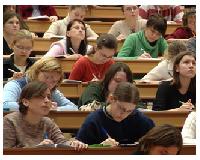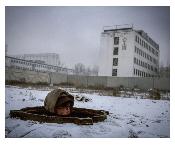These are Martin Levin’s Platonic Solid sculptures , on display at the 2012 Bridges Math and Art Conference at Towson University.
Read more about the artist and his work here.
These are Martin Levin’s Platonic Solid sculptures , on display at the 2012 Bridges Math and Art Conference at Towson University.
Read more about the artist and his work here.
An amazing discussion emerged the last time a purported trigonometric graph appeared on a NY state Regents exam. So I was very excited to see a trig graph on a January 2013 Regents exam.
So, is this a trig function?
Not quite!
Maybe next time.
Related Posts
 Through Math for America, I am part of an ongoing collaboration with the New York Times Learning Network. My latest contribution, a Test Yourself quiz-question, can be found here:
Through Math for America, I am part of an ongoing collaboration with the New York Times Learning Network. My latest contribution, a Test Yourself quiz-question, can be found here:
Test Yourself Math — March 18, 2013
The question deals with massive open online courses (MOOCs) and the online test-proctoring companies that supervise student exams via webcam. How much could such a company make from a single MOOC?
I’m greatly enjoying my Penrose Magnets. And I’m following the rules this time!
 When I visited Mongolia 15 years ago, a young man approached us on the streets of Ulan Bator and offered to show us around. His name was Soyoloo, and we spent a few fun days hanging out with him.
When I visited Mongolia 15 years ago, a young man approached us on the streets of Ulan Bator and offered to show us around. His name was Soyoloo, and we spent a few fun days hanging out with him.
I have many fond memories of Mongolia, so this NYT piece on Ulan Bator’s underground homeless population immediately caught my attention. The first picture is of a man named Soyoloo. I wondered if this was the same Soyoloo I met so long ago.
How likely is that? A naive estimate looks like this: half of the one million people in Ulan Bator are men, so there’s a 1 in 500,000 chance that a randomly-selected (that is, randomly photographed) man from Ulan Bator is the man I met 15 years ago. At 0.0002%, this does not seem very likely.
But here’s where conditional probability comes in. The man in the photograph isn’t just any randomly-selected man; he’s a randomly-selected man named Soyoloo. What I really want to know is, given the condition that a randomly selected man from Ulan Bator is named Soyoloo, what is the probability that he’s the man I met 15 years ago?
Naturally the answer depends on how many men in Ulan Bator are named Soyoloo. “Soyoloo” doesn’t appear on any list of most popular Mongolian names, so I am going to estimate that at most 0.5% of Mongolian men are named Soyoloo (this would be roughly equivalent to ‘Andrew’ in the US, the 35th most popular male name). This means that at most 2,500 men (0.5% of 500,000) in Ulan Bator are named Soyoloo. Therefore, if a man in Ulan Bator named Soyoloo is selected at random, there is a 1 in 2,500 chance (0.04%) it’s the man I met.
This is the power of conditional probability. The man in the photograph and the man I met share a common characteristic: being named Soyoloo. Knowing this condition greatly alters the probability that they are the same person.
In fact there’s another characteristic the two men share: they are both comfortable striking up relationships with foreign strangers, whether it’s me or a photojournalist. Let’s call this characteristic gregariousness. Now the question is, what is the probability that a randomly-selected gregarious male resident of Ulan Bator named Soyoloo is the person I met 15 years ago?
Well, how many gregarious Mongolians are there? Let’s say 5% of all Mongolians are gregarious. Then there are roughly 125 gregarious Mongolian men named Soyoloo in Ulan Bator, and thus, a 1 in 125 (0.8%) chance that the man in the photo is the same man I met. Not a lock, but not a longshot, either!
This probability may seem surprisingly high, given the distance in both time and space, but I have a feeling it’s him. His eyes look warmly familiar.